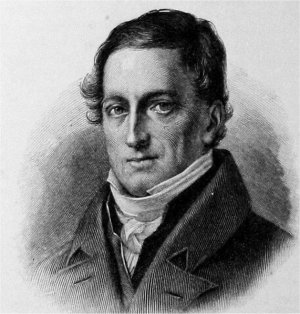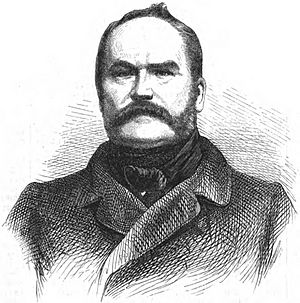Herbartianism facts for kids
Herbartianism (say: Her-bart-ti-an-ism) was a way of thinking about education. It was based on the ideas of a German teacher named Johann Friedrich Herbart. This method became very important in American schools in the late 1800s. It helped teachers try to make education more scientific. Herbart believed that new ideas should be taught step-by-step. Later, other teaching methods, like those from John Dewey, became more popular.
What is Herbartianism?
Herbartianism was often used to teach teenagers. It had a big impact on American schools in the 1800s. Herbart thought it was important to respect each student's unique personality. He also focused a lot on teaching good morals. The main goal of Herbartianism was to help students learn everything about a topic, starting from knowing nothing.
Herbart's teaching method had five clear steps:
- Preparation: Teachers get students ready for new material. They connect it to what students already know or are interested in. This makes students want to learn more.
- Presentation: The new information is shown in a clear, real-world way.
- Association: Students compare the new material with what they already know. They look for similarities and differences. This helps them understand what makes the new information special.
- Generalization: Students learn to take the new ideas beyond just specific examples. They start to understand the bigger picture.
- Application: If students truly understand the new material, they use it in all parts of their lives. It's not just for schoolwork.
Through these steps, students could gain a complete understanding of what they were learning. Herbartianism also gave teachers new words to talk about teaching. It helped make teaching a more professional job.
How Herbartianism Grew
The name Herbartianism comes from Herbart. However, this teaching movement didn't really get organized until 25 years after he died in 1841. Herbartianism grew from Herbart's ideas and split into two main ways of thinking.
One way was led by Tuiskon Ziller in Leipzig. He expanded on Herbart's idea of "unifying studies." This meant connecting different subjects, often around one main topic. The other way was started by Karl Stoy in Jena. He opened a practice school, similar to Herbart's own school in Königsberg.
A student of both Ziller and Stoy, Wilhelm Rein, later took over the Jena school. He created a curriculum for German elementary schools that the school used. This school became a very important place for Herbartian ideas. Teachers from outside Germany, including the United States, came to study there.
Between the 1890s and early 1900s, Herbartianism was very important in teacher training schools and universities. These places were trying to make education more scientific. Supporters of Herbartianism started the National Herbart Society in 1895. Their goal was "to study and investigate and discuss important problems of education." Important members included Charles De Garmo (their first president), Charles Alexander McMurry, and Frank Morton McMurry. All of them wrote books about teaching methods. The society even recognized works by John Dewey that were influenced by Herbartianism. In 1902, the society dropped "Herbart" from its name. It later became the National Society for the Study of Education.
Why Herbartianism Declined
Newer teaching ideas, like those from John Dewey, eventually took the place of Herbartianism. Even though Herbart's work isn't popular today, its biggest impact was in the 1800s. It helped develop the "science of education." In a 1996 encyclopedia, J. J. Chambliss wrote that Herbartianism's influence can still be seen. This is true wherever thinking, making moral choices, and behavior are all considered together in education.



